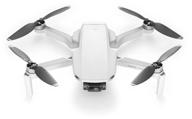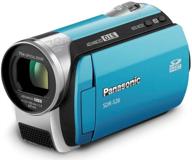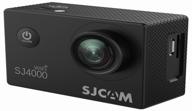
Review on Altair Aerial Dagger Foldable GPS Drone - 4K UHD Camera, 5G Compatibility, Brushless Motors, Optical Flow Stabilization, Auto Return - Lightweight 0.55 lbs (Lincoln, NE Company) by Christine Chase

Amazing drone with features
I ordered this drone for my husband who has a lot of experience with RC airplanes and drones. He was looking for a small portable drone that he could take with him on various trips. The Altair dagger seemed to fit the bill. The kit includes a fully assembled drone body, transmitter, battery, dual battery charger, USB charging cable, full set of spare propellers, propeller replacement kit, manual and cardboard/foam carrying case. The guide is very detailed and covers each topic well. The carrying box perfectly holds and protects the drone and its components. Additional batteries and spare propellers can be purchased from Altair Aerial's website. Since I don't fly drones, my husband thinks about this product: An aerial object should not be considered indestructible. This drone is no exception. Users should expect that any drone may be destroyed if it crashes into something or crashes heavily. However, this drone looks well built. The motor mounts are strong and should withstand moderate impact. The plastic cover should also protect the drone well. There is no propeller protection. The reason for this is that the weight of the guards would exceed the FAA's total weight of the drone and registration would be required. The FAA has introduced rules requiring the registration of any drone operator who flies a drone that weighs more than 249 grams. The dagger weighs less than this limit, so no registration is required. This is a plus for those looking for a decent entry-level drone without the hassle of registration. The dagger is also not subject to the FAA's remote identification requirement. When this rule comes into effect, there is no need to install a flight tracking device, which is also a plus. The Dagger's specs are great for a drone of this size. While many of the features are good for beginners, they are also useful for experienced pilots. This drone has both GPS and optical stabilization system, which allows the drone to hover and fly more stably than portable drones. The GPS system is used outdoors and the optical system is used both indoors and outdoors when there is a problem with the GPS signals. With the GPS system, the drone has three Return Home (RTH) modes. When this function is activated, the drone will return to its starting point when you give it a command, or automatically when the battery runs out below a certain point or the signal to the transmitter is lost. If the battery runs out before it can return to its takeoff point, the plane will automatically land where it is. At the touch of a button, the drone can take off or land automatically. The 4K UHD camera is a plus for a drone of this size. The camera angle is set manually before flight, varying the 90 degree angle from horizontal to vertical. The dagger has a micro SD slot for taking pictures and videos, which can also be recorded on your mobile device using the M RC PRO app. I will skip all setup steps required before flying, except that the manual says that compass calibration should be done every time the battery is changed. I have interpreted this to mean that the calibration resets when the drone is powered off. However, so far the drone has not prompted me to perform any calibrations since the initial calibration has been performed. I prefer that the calibration doesn't reset until the pilot decides to reset it. There are often many flights from the same location, and the need to calibrate for each flight is a nuisance that unnecessarily wastes valuable battery life. However, when I change flight location, I really want to recalibrate, but I can't find a way to force a recalibration. When the opportunity arises, I will delve into this topic in more detail. Flights with the Dagger were uneventful, which is great considering many smaller drones can be a handful. Auto takeoff and auto landing worked as they should. A manually selected RTH returned the drone to its launch point, but instead of hovering over the launch point, it circled the launch point. As soon as I disabled RTH it stopped spinning and got stuck in hover mode. This can only be a one off issue as I haven't done any RTH testing since. I had a weak return home when the drone was quite low and close to the takeoff point, so it automatically landed right away, which the manual says it will do in such conditions. Beginners should note that the RTH does not avoid obstacles. So if they get in his way during the return, you'll have to increase the drone's altitude or manually maneuver around the object. The drone was quite stable in hover mode and in flight. When the controls are released the aircraft will stop and hover acceptably. Every now and then there is a little movement when hovering, but nothing notable. The manufacturer states a range of 300m, but I haven't flown that far so I can't confirm the range. Although Dagger isn't required to fly, it uses an app called M RC PRO to control some limited flight functions, allowing you to see what the camera sees. The application can take photos and videos. My phone is too big for the built in phone holder so I had to leave it in my pocket when flying and get it out when needed. I need to come up with a better scheme. The app can land and take off automatically with the drone as well as trigger the RTH function. The application has settings that allow you to set the maximum height and distance from the starting point where the drone will fly. You can also set the RTH altitude, which will cause the drone to climb to that altitude before it starts returning. This is handy for making sure the drone flies well over obstacles. I haven't tested any of these features yet. The photos and videos captured by the drone are of decent quality. Since the camera is not on a gimbal, the video images will tilt as the aircraft pitches. This is normal for all drones until you move on to more complex and expensive drones.
- that even old people can understand
- Some little things












